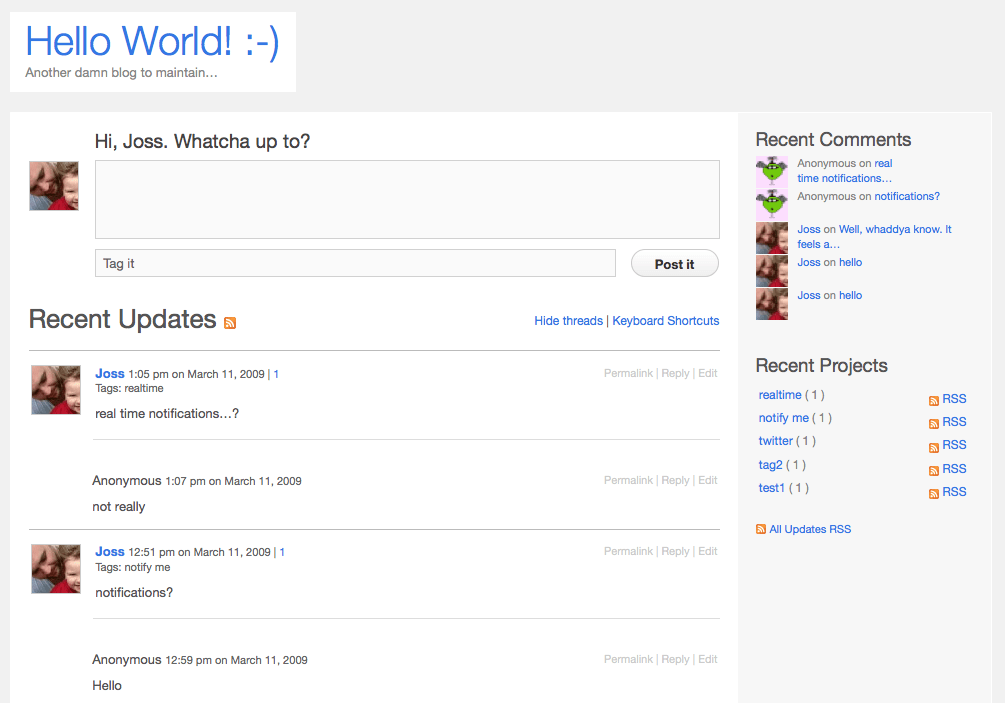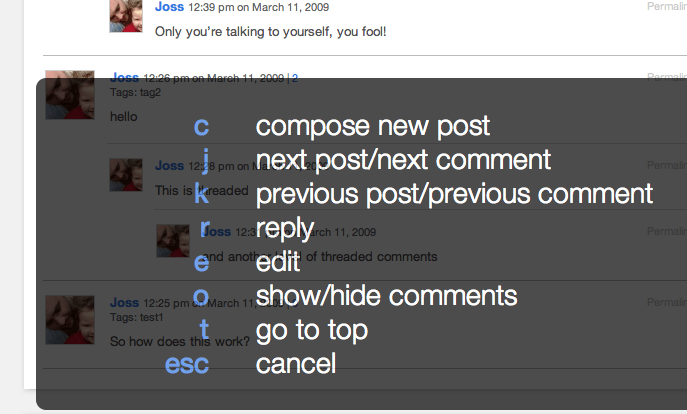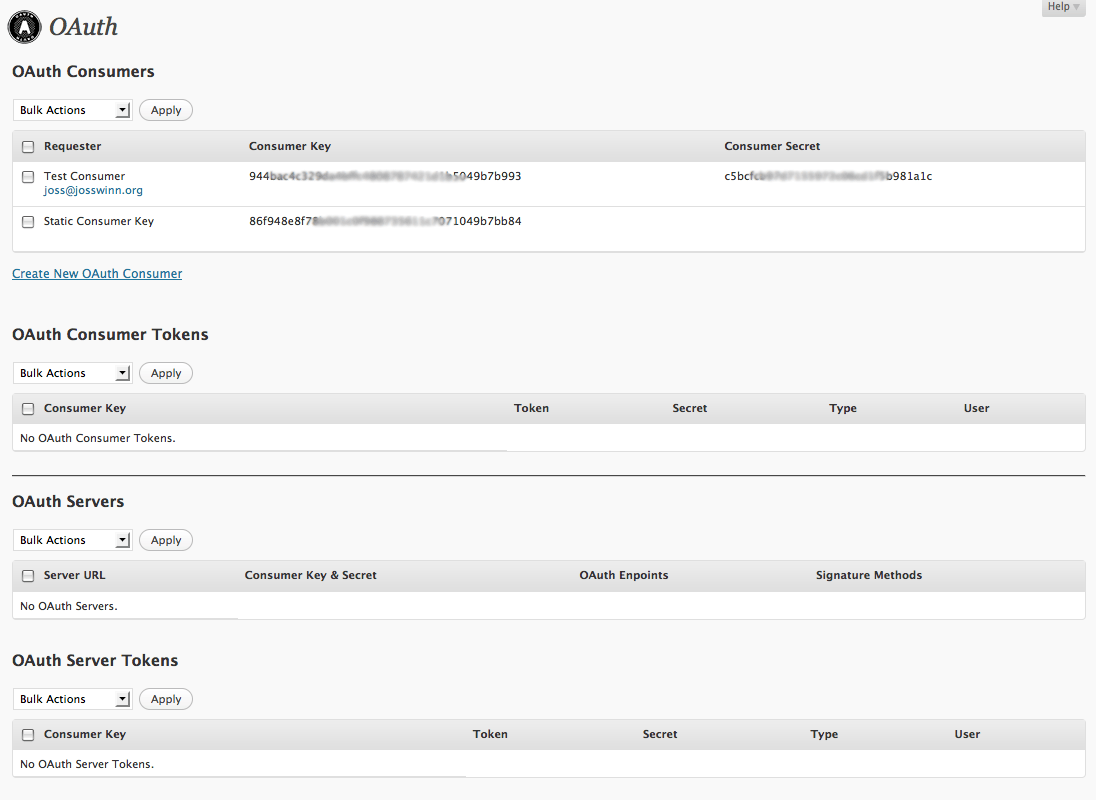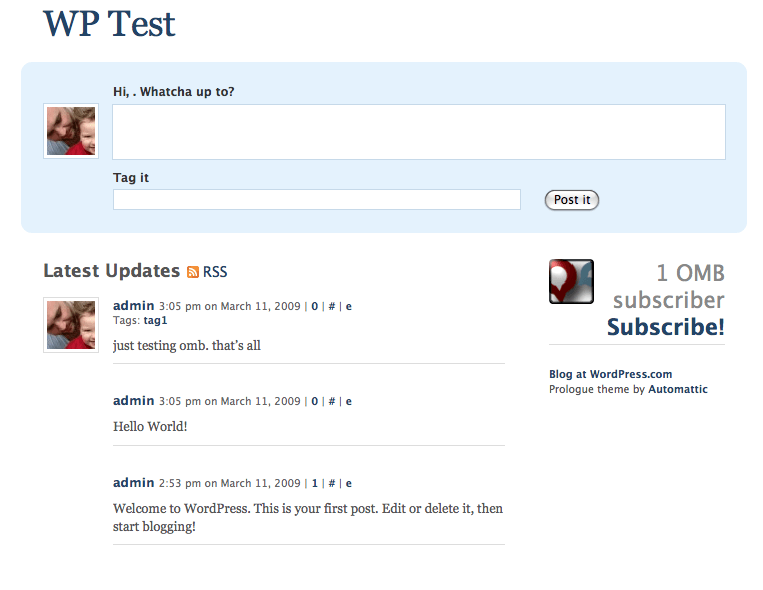Last week, I wrote about how it is relatively simple to ‘pimp your ride on the semantic web‘. Over the weekend, I stumbled upon Triplify, a small ‘plugin’ for pretty much any web publishing platform, that “reveals the semantic structures encoded in relational databases by making database content available as RDF, JSON or Linked Data.” What is so appealing about Triplify is how easy it is to implement, especially alongside a WordPress site.
I can confirm that the three-step installation process is all it takes, although I wouldn’t undertake implementing this blindly as you are, literally, exposing a semantic representation of your database content. In other words, you should look at the configuration file you’re using and check that it’s going to expose the right data and not clear text passwords and unpublished posts and comments. Before I implemented it, I realised that it would expose comments on a bunch of posts that I have since made private (they were imported from an old, private blog), so I had to ‘unapprove’ those comments so the script didn’t expose them to the public. A five minute job. Alternatively, the script could probably be modified to work around my problem, by only exposing comments after a certain date, for example.
The end result is that, with a WordPress site, you expose a semantic representation of your users, posts, pages, tags, categories, comments and attachments in RDF (N-Triples) and JSON formatted data (for JSON, just add ‘?t-output=json’ to the end of the URI). Like I said though, it could be used on any database driven web application. Here’s what you get when you expose the high level links to your content:
<http://blog.josswinn.org/triplify/> <http://www.w3.org/2000/01/rdf-schema#comment> "Generated by Triplify V0.5 (http://Triplify.org)" . <http://blog.josswinn.org/triplify/> <http://creativecommons.org/ns#license> <http://creativecommons.org/licenses/by/2.0/uk/> . <http://blog.josswinn.org/triplify/post> <http://www.w3.org/1999/02/22-rdf-syntax-ns#type> <http://www.w3.org/2002/07/owl#Class> . <http://blog.josswinn.org/triplify/attachment> <http://www.w3.org/1999/02/22-rdf-syntax-ns#type> <http://www.w3.org/2002/07/owl#Class> . <http://blog.josswinn.org/triplify/tag> <http://www.w3.org/1999/02/22-rdf-syntax-ns#type> <http://www.w3.org/2002/07/owl#Class> . <http://blog.josswinn.org/triplify/category> <http://www.w3.org/1999/02/22-rdf-syntax-ns#type> <http://www.w3.org/2002/07/owl#Class> . <http://blog.josswinn.org/triplify/user> <http://www.w3.org/1999/02/22-rdf-syntax-ns#type> <http://www.w3.org/2002/07/owl#Class> . <http://blog.josswinn.org/triplify/comment> <http://www.w3.org/1999/02/22-rdf-syntax-ns#type> <http://www.w3.org/2002/07/owl#Class> .
Here’s an example of what you get when you expose the full content:
<http://blog.josswinn.org/triplify/post/154> <http://www.w3.org/1999/02/22-rdf-syntax-ns#type> <http://rdfs.org/sioc/ns#Post> . <http://blog.josswinn.org/triplify/post/154> <http://rdfs.org/sioc/ns#has_creator> <http://blog.josswinn.org/triplify/user/1> . <http://blog.josswinn.org/triplify/post/154> <http://purl.org/dc/terms/created> "2008-10-06T05:55:25"^^<http://www.w3.org/2001/XMLSchema#dateTime> . <http://blog.josswinn.org/triplify/post/154> <http://rdfs.org/sioc/ns#content> "Up early to go to Sheffield for LPI exams. The last week has left me underprepared. Never mind." . <http://blog.josswinn.org/triplify/post/154> <http://purl.org/dc/terms/modified> "2008-10-06T20:12:15"^^<http://www.w3.org/2001/XMLSchema#dateTime> . ... <http://blog.josswinn.org/triplify/post/154> <http://www.holygoat.co.uk/owl/redwood/0.1/tags/taggedWithTag> <http://blog.josswinn.org/triplify/tag/27> . ... <http://blog.josswinn.org/triplify/post/154> <http://www.holygoat.co.uk/owl/redwood/0.1/tags/taggedWithTag> <http://blog.josswinn.org/triplify/tag/41> . <http://blog.josswinn.org/triplify/post/154> <http://www.holygoat.co.uk/owl/redwood/0.1/tags/taggedWithTag> <http://blog.josswinn.org/triplify/tag/42> . ... <http://blog.josswinn.org/triplify/post/154> <http://sdp.iasi.rdsnet.ro/semantic-wordpress/vocabulary/belongsToCategory> <http://blog.josswinn.org/triplify/category/22> . ... <http://blog.josswinn.org/triplify/tag/154> <http://www.w3.org/1999/02/22-rdf-syntax-ns#type> <http://www.holygoat.co.uk/owl/redwood/0.1/tags/Tag> . <http://blog.josswinn.org/triplify/tag/154> <http://www.holygoat.co.uk/owl/redwood/0.1/tags/tagName> "valentine" .
You can choose to expose different levels of information in your HTML source. If you have more than a moderate amount of content, you’ll probably want to just expose the top level links as in the first example and let the users of your data dig deeper. You’ll also note that you can (and should) attach a license to your data.
A number of namespaces are recognised as well as a WordPress vocabulary.
$triplify['namespaces']=array( 'vocabulary'=>'http://sdp.iasi.rdsnet.ro/semantic-wordpress/vocabulary/', 'rdf'=>'http://www.w3.org/1999/02/22-rdf-syntax-ns#', 'rdfs'=>'http://www.w3.org/2000/01/rdf-schema#', 'owl'=>'http://www.w3.org/2002/07/owl#', 'foaf'=>'http://xmlns.com/foaf/0.1/', 'sioc'=>'http://rdfs.org/sioc/ns#', 'sioctypes'=>'http://rdfs.org/sioc/types#', 'dc'=>'http://purl.org/dc/elements/1.1/', 'dcterms'=>'http://purl.org/dc/terms/', 'skos'=>'http://www.w3.org/2004/02/skos/core#', 'tag'=>'http://www.holygoat.co.uk/owl/redwood/0.1/tags/', 'xsd'=>'http://www.w3.org/2001/XMLSchema#', 'update'=>'http://triplify.org/vocabulary/update#', );
So, what’s the point in doing this? Well, it’s fairly trivial and if you think that structured, linked, machine-readable licensed data is a Good Thing, why not? The Triplify website lists an number of advantages:
Such a triplification of your Web application has tremendous advantages:
- The installations of the Web application are better found and search engines can better evaluate the content.
- Different installations of the Web application can easily syndicate arbitrary content without the need to adopt interfaces, content representations or protocols, even when the content structures change.
- It is possible to create custom tailored search engines targeted at a certain niche. Imagine a search engine for products, which can be queried for digital cameras with high resolution and large zoom.
Ultimately, a triplification will counteract the centralization we faced through Google, YouTube and Facebook and lead to an increased democratization of the Web
The vision of the semantic web and semantic publishing is one of meaningfully identifying objects (and people) on the Internet and showing their relationships. This should improve searches for things on the web, but also improve how we exchange knowledge, re-use information and help clarify our identity on the web, too. It’s an ambitious task, but made easier with tools like Triplify. The semantic web also raises questions over individual privacy and, if data is well formed and accessible, it may be easier to control and therefore censor. The creator of Triplify recently gave a technical presentation on Triplify and how it is being used to publish data collected by the OpenStreetMap project. It shows how geodata exposed in this way can result in mashup applications that directly benefit you and me.





















